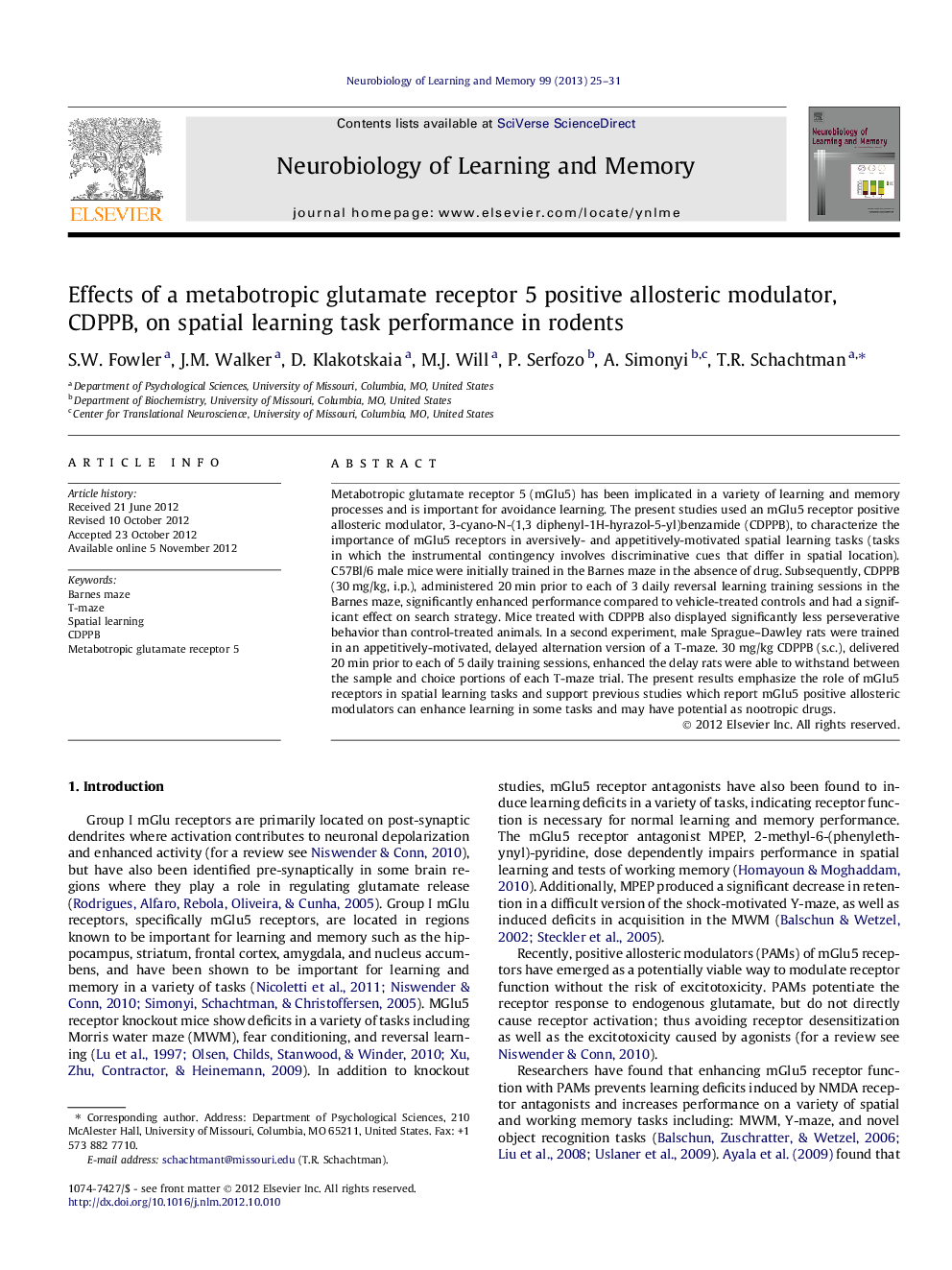| Article ID | Journal | Published Year | Pages | File Type |
|---|---|---|---|---|
| 936682 | Neurobiology of Learning and Memory | 2013 | 7 Pages |
Metabotropic glutamate receptor 5 (mGlu5) has been implicated in a variety of learning and memory processes and is important for avoidance learning. The present studies used an mGlu5 receptor positive allosteric modulator, 3-cyano-N-(1,3 diphenyl-1H-hyrazol-5-yl)benzamide (CDPPB), to characterize the importance of mGlu5 receptors in aversively- and appetitively-motivated spatial learning tasks (tasks in which the instrumental contingency involves discriminative cues that differ in spatial location). C57Bl/6 male mice were initially trained in the Barnes maze in the absence of drug. Subsequently, CDPPB (30 mg/kg, i.p.), administered 20 min prior to each of 3 daily reversal learning training sessions in the Barnes maze, significantly enhanced performance compared to vehicle-treated controls and had a significant effect on search strategy. Mice treated with CDPPB also displayed significantly less perseverative behavior than control-treated animals. In a second experiment, male Sprague–Dawley rats were trained in an appetitively-motivated, delayed alternation version of a T-maze. 30 mg/kg CDPPB (s.c.), delivered 20 min prior to each of 5 daily training sessions, enhanced the delay rats were able to withstand between the sample and choice portions of each T-maze trial. The present results emphasize the role of mGlu5 receptors in spatial learning tasks and support previous studies which report mGlu5 positive allosteric modulators can enhance learning in some tasks and may have potential as nootropic drugs.
► CDPPB enhanced Barnes maze reversal learning. ► CDPPB had a significant effect on search strategy. ► CDPPB reduced perseverative responses. ► CDPPB enhanced working memory in a T-maze. ► mGlu5 receptors are important for spatial learning in appetitive, as well as in aversive tasks.
